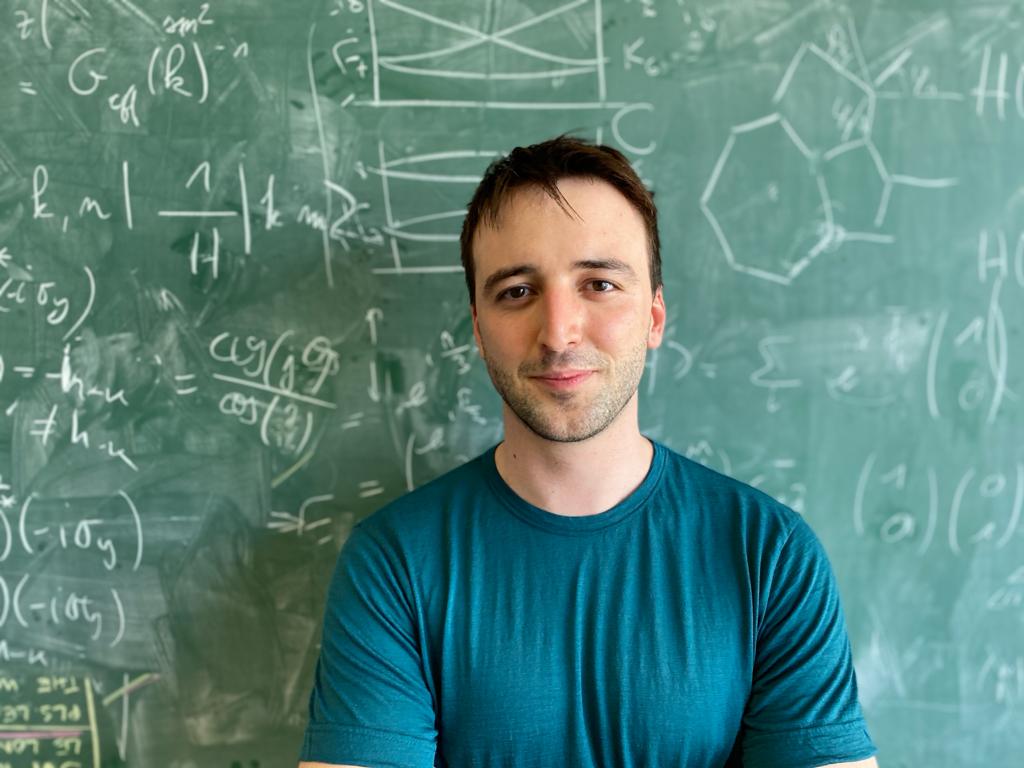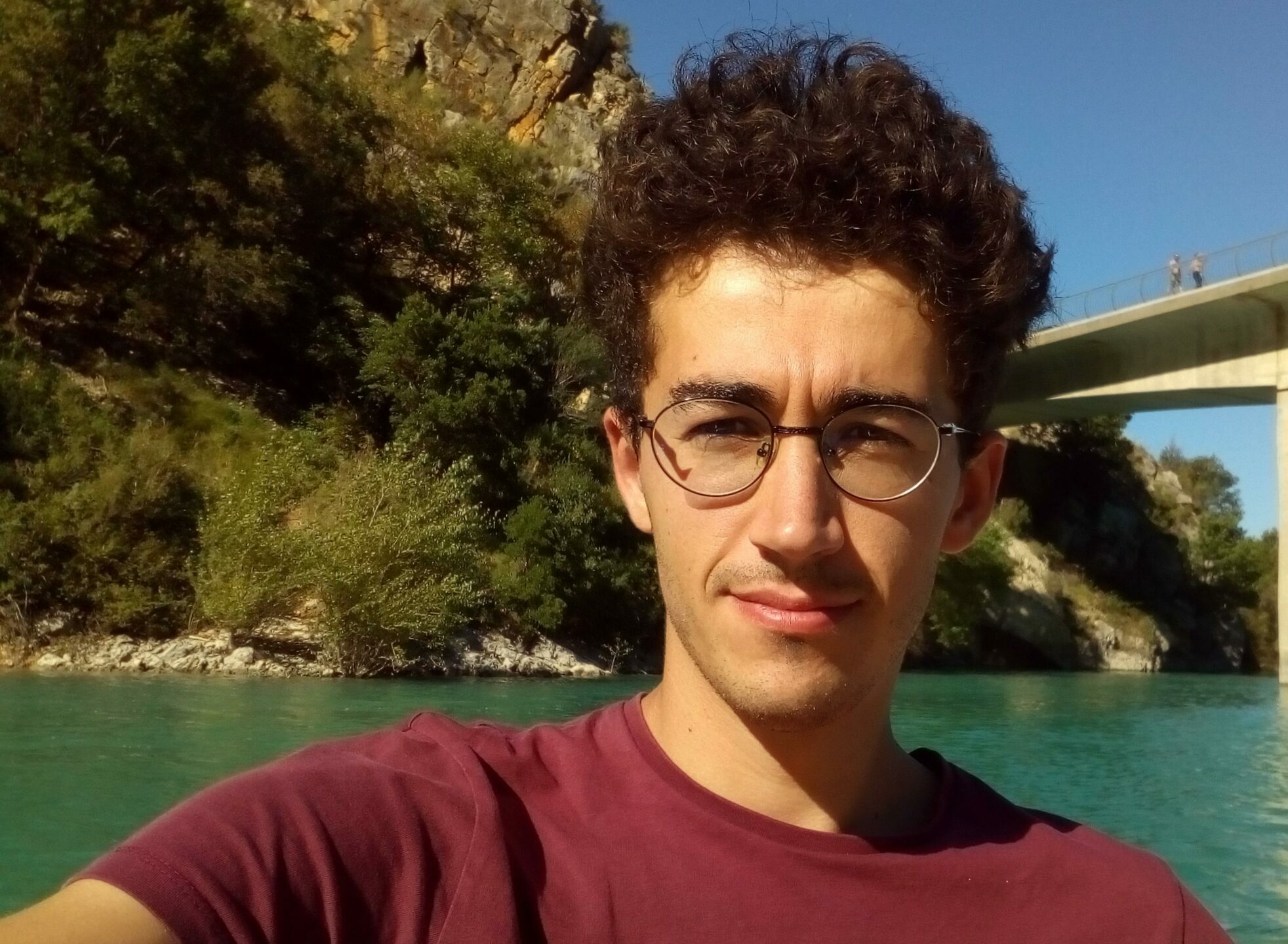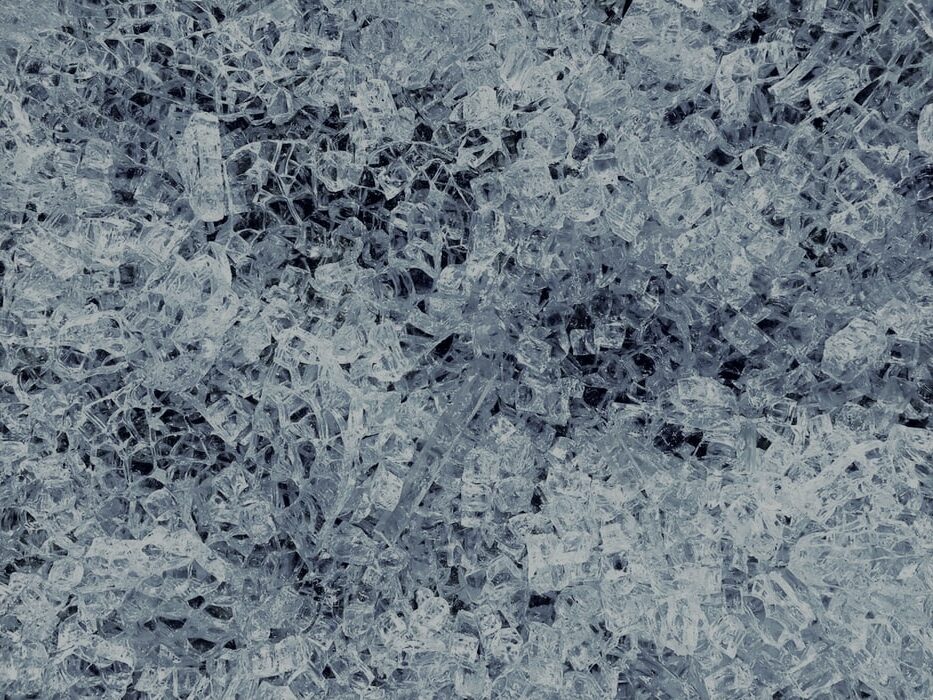Richard: So I’m Richard East and I’m having a slightly contrived conversation with Pierre Martin-Dussaud through which we hope to give our readers an idea about what loop quantum gravity (LQG) is and the problems it attempts to solve.
In line with this, I would say there are two simply irreconcilable perspectives in modern physics. The first is the perspective of things at the ‘large scale’ determined by general relativity as broadly described by Einstein in 1915. The second perspective is things at the ‘small scale,’ defined by quantum mechanics, which emerged formally as a field at the 5th Solvay conference in 1927. The problem centres around the fact that the very elements we, as physicists, try to work with when applying these theories are conceptually nothing alike. To understand this better, I think we first have to look at what these two theories actually say.
Pierre: Let’s start with the large scale. When it emerged as a modern science, physics was really a science of motion: which house will my cannonball fall on? Where in the sky will Jupiter be in 6 months? The underlying metaphysics is that there are bodies which exist within some immaterial medium (space) and some universal clock (time) that makes bodies move forward. This framework was a revolution in itself, and it proved extremely powerful. It took a long time before we realised it’s actually wrong. The first revision of the paradigm was special relativity (1905). Contrary to everyday-life intuition, there is no universal way to distinguish space from time. The motion of bodies can only be described consistently within a medium that mixes up the previously separated notions of space and time; thus wisely dubbed space-time. The second revision is general relativity (1915). In a sense, it is much more dramatic because it says that space-time is not a passive stage upon which motion is happening. Instead, space-time itself is moving! We say it’s dynamic. These dynamics are what we experience every day as gravity: things fall. We used to think that gravity was just a force acting within space-time, but we now understand that gravity and space-time are two sides of the same story: there can’t be one without the other.
To understand this better, you have to look at one of Einstein’s original thought experiments. Imagine you are in a windowless pod: Could you tell if you were floating in space or free-falling under the pull of gravity? Ask yourself what test you could do in the pod with the objects around you to tell? The problem is they are all either floating or in free fall with you, and objects of different weights still fall at the same speed (remember Galileo dropping different weights in Pisa?). As these two experiences of floating and falling are locally identical, we arrive at the principle of general relativity. It’s important to know that this is different from other forces. In a pod of magnetic objects, and this may not be obvious, you could tell if you were being pulled towards something magnetic or floating. The more magnetic objects are, the stronger the pull (unlike with gravity, where all things fall at the same rate). This means that there are tests that could tell you from inside the pod what was really happening, which is why there is no magnetic equivalent of general relativity.
“Gravity is not a force at all”
The reason gravity is like this is because – it’s not a force at all! To understand what this means, imagine taking two cannonballs being fired from two cannons. Let’s point one 20 degrees left of the other, so they are firing in different directions. Now imagine after firing them we found that after some long-distance they collided. How could this be? It looks like some force brought them together (like gravity). The explanation is as follows: We are firing our cannons on a tiny planet, and their paths follow a spherical surface – then it seems obvious that they would collide. Just imagine two aeroplanes taking off at 20 degrees from each other and flying around the earth without changing direction – of course, they will meet at some point. If we then abstract this idea a little further, we can discuss gravity in general. Here the ‘gravitational force’ is the result of the curvature of the universe itself. What Einstein showed us is that the degree of this curvature in any region is determined by the mass of the objects there – so objects of higher mass curve space-time more and that’s why their gravitational ‘pull’ seems stronger. Just imagine firing those cannons again. The smaller the little planet (so, the more curved the surface) we are on, the more quickly the cannonballs will meet – which if we didn’t realise we were on a curved surface, would look like the balls were being pulled together faster. In this way, gravity is not a force in space-time; it is the shape of space-time.
Richard: Okay, so now let’s change perspective and zoom into small-scale physics. We are now looking at quantum mechanics, which for most people is usually familiar through Schrödinger’s famous cat paradox. The idea is that Schrödinger has put a cat in a box with a vial of poison that will be released as soon as a radioactive isotope decays. This decay is realised when some atom, which is made up of protons, neutrons, and electrons (the building blocks of atoms) splits up in some way. This in itself, while a strange thing to do, isn’t the strangest part of the situation presented by Schrödinger’s thought experiment. The strange part is that quantum mechanics informs us that the ‘state’ of a situation can, over time, become a superposition of other states (like the cat being alive or the cat being dead). However, when we check or ‘measure’ what is going on, we only find one of the states in the superposition, and which state we find is entirely probabilistic. So what is truly weird with Schrödinger’s cat experiment is the decay of an isotope being quantum mechanical. The state of the isotope is initially un-decayed when we close the box, but with each passing moment, the state inside the box is becoming a superposition of the state where the atom is and isn’t decayed. Until we open the box and check or ‘measure’ the cat’s state, it remains in a superposition of being both alive and dead!

Richard East
A PhD at the Université Grenoble Alpes. Previously studied at the universities of Manchester and Oxford. Working on the application of diagrammatic techniques from quantum information to condensed matter and quantum gravity
Now, those paying extra close attention will, of course, point out that though our description makes it sound like the cat is alive or dead, we are just stating what we don’t know. In reality, we might say, inside the box, one of the circumstances exists: The cat is alive, or it is dead. The problem is that many experiments have shown that this cannot be the case. They say that the measurement outcomes are ‘contextual,’ which means they logically cannot have predetermined fixed properties – that is to say, the cat’s state cannot be certain before we check inside the box if our theory corresponds with broader experimental evidence!
So what is the quantum mechanical perspective of the world? It is of ‘states’ evolving smoothly through time (think of our cat moving into a superposition of being alive and dead) and sharp, discontinuous measurements where things ‘collapse’ into one of the possible measurement outcomes (think of opening the box and seeing the alive or dead cat). In opposition to general relativity, in quantum mechanics, we are talking about a world that often contains discontinuous probabilistic changes – things are not always smooth and are not always deterministic.
Pierre: Now we remain with a theory in each hand. On the one hand, we have quantum mechanics that deals with very small objects, like atoms or photons. On the other hand, we have general relativity, which looks after big objects like stars and galaxies. Both theories have been confirmed in many experiments with excellent accuracy. So, where is the catch? As we’ve been alluding to, what troubles physicists is that the physical principles and the mathematics of both theories are very different. They don’t fit well within the same framework of thinking. To put it in a nutshell, general relativity says that space-time is just like matter (it moves) and is completely deterministic. But quantum mechanics says the matter has to be “quantum”. Hence, space-time should be quantum as well and is absolutely not deterministic, which doesn’t agree with general relativity at all. Because of this, many physicists think that general relativity is just an approximation, valid on a large scale. Still, at a more fundamental level, if you zoom in, you would realise that space-time has a quantum behaviour. Finding the quantum structure of space-time: this is the ambition of scientists working on quantum gravity.
„We collapse space-time itself“
Richard: So we’re now at the point that we’ve decided on a particular order of precedence here. We’ve come to the conclusion that the notions of quantum mechanics are more primitive and we should work primarily with its concepts while trying to extend our theory to include gravity. This is exactly what loop quantum gravity tries to do, and it does this by quantising space-time itself. To understand the approach, consider that when I talked about quantum mechanics before, I talked about states in terms of Schrödinger’s poor cat and us as experimentalists: Where was space-time? It was in the background. Quantum mechanics was happening in space-time. If we want to fuse quantum mechanics and gravity, we should view these properties of space-time as fundamentally quantum mechanical measurements, too! We take particular possible volumes, angles, and areas that make up reality at the smallest scale, and we say that these too must be associated with particular quantum states.
As we now know, since these are now quantum states, they aren’t necessarily bound to only one particular set of measurements being true. We can be in a superposition of them – only when we measure a specific volume, a certain area, and so on does a measurement become determined as the state of reality at that moment (like the cat being alive or dead when we check inside the box). In this way, when we measure, we don’t just collapse a particular experimental system sitting in space-time: We collapse space-time itself!
However, for the sake of completeness, it should be said that loop quantum gravity isn’t the only approach to merging gravity and quantum mechanics. One example of a popular alternative approach is provided by string theory, which aims not only to describe how gravity and quantum mechanics function together but also to be a ‘theory of everything’. It aspires to fuse all the known fundamental interactions known to physicists into a single framework. Loop quantum gravity is a more humble endeavour seeking solely to solve how gravity and quantum mechanics can be described in the same terms. Loosely, string theory postulates that reality is made of ‘string’ like objects in space-time, which means that gravity can be understood alongside other forces. Loop quantum gravity, on the other hand, is a theory of space-time in which the quantisation of space-time itself leads to the quantisation of gravity. At present, neither theory has been verified by experiment, so modern theoretical physics is divided on which approach to take.

Pierre Martin-Dussaud
PhD at Aix-Marseille University. Post-doc at Penn State University. Working on the quantum information structure of space-time
Pierre: Focussing once again on Loop quantum gravity, the next logical question is: What does it mean to measure space-time? It means pulling out a ruler or a clock and taking note of the values they show. Nothing revolutionary so far. But if you try to do the same with very tiny rulers and very precise clocks, LQG predicts that the measured values only take integer values of some fundamental unit. Between two graduations, between a tick and a tock, there is no middle term; your eyes irremediably fall over one side or the other. It means that space-time has a granular structure that physicists call discreteness. Like the pixels of your screen, which are tiny squares with only three possible colours (red, green, blue), the grains of space would be tiny tetrahedra with different possible “spins” on their faces. We have to be careful, as this has not been observed yet, but those of us studying loop quantum gravity believe it to be true.
This would mean that life would not be a continuous evolution but a succession of fixed pictures, like in a film, with 10^44 frames per second! Granular both in space and time, space-time as a whole spreads out as a foam, which we call a spin-foam. Because it is quantum mechanical, spin-foams don’t describe a unique deterministic history of the universe but rather probabilities of many possible histories. Loop quantum gravity theoretically enables us to compute such probabilities. The hiccup is the extreme complexity of actually performing such a computation. We’re interested in answering if we could use quantum computers to perform these calculations by merging ideas from quantum gravity and quantum information. Quantum computing, however, is a subject for another time…
By Richard East

